How to care for a room violet in winter?
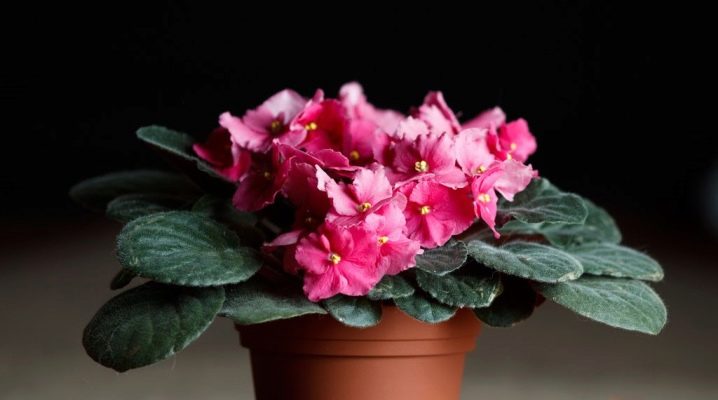
Saintpaulia, which is much more often referred to as a room violet, is one of the most popular plants for home decoration. However, in order for her to be happy throughout the year, it is required to provide her with additional care measures during the stressful winter period. If you do not think about this question, then Saintpaulia can even be lost.
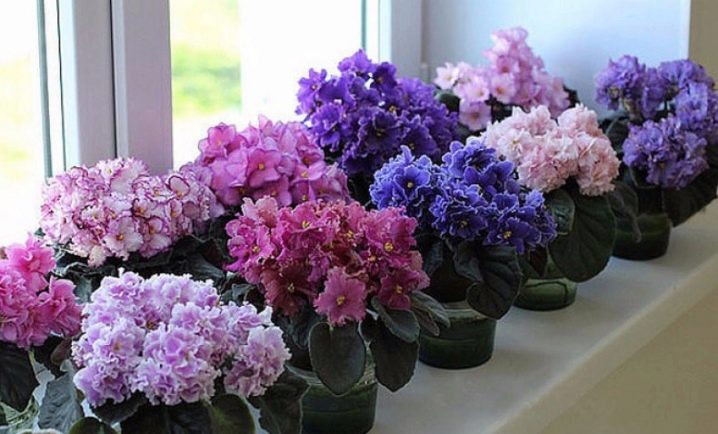
Optimum temperature
Indoor violet cannot remain on the loggia in winter, especially if it is not additionally insulated. The optimum temperature ranges from 18 to 24 degrees Celsius. In addition, it is important to ventilate the room from time to time, since the flower does not react well to stagnant air.
If the Saintpaulia withers, then, most likely, she found herself in the place where the draft is blowing, so it should be immediately rearranged.
Especially dangerous is the location on the windowsill located above the heating battery - in this case, the cold from the window is combined with the heat from below.
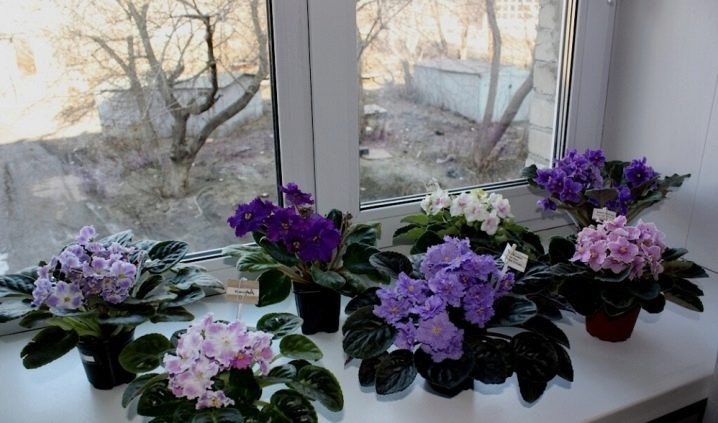
In this case, the stems freeze, and the lower layers of the soil dry up, so the radiators will at least have to be covered with a dense cloth or a special structure. If, on the contrary, the window sill is cold, then it should be covered with a piece of foam, a thick layer of paper, or even wooden fragments - that is, any materials that can create a stand separating the bottom of the pot from the ice surface. The ideal solution would be to organize a special rack or shelf structure located near the window.
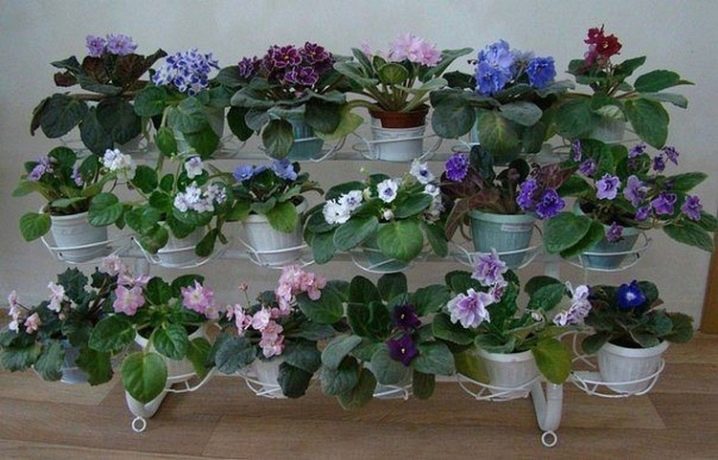
It is important to mention that the lower critical level for Saintpaulia is 12 degrees Celsius, and the upper critical level is 29 degrees Celsius. Freezing the plant leads to burns, rotting leaves and crumbling inflorescences. The consequences of overheating are yellowing of leaves and stems, as well as the occurrence of diseases. Blooming violets in winter is possible only within the temperature range from 20 to 25 degrees.
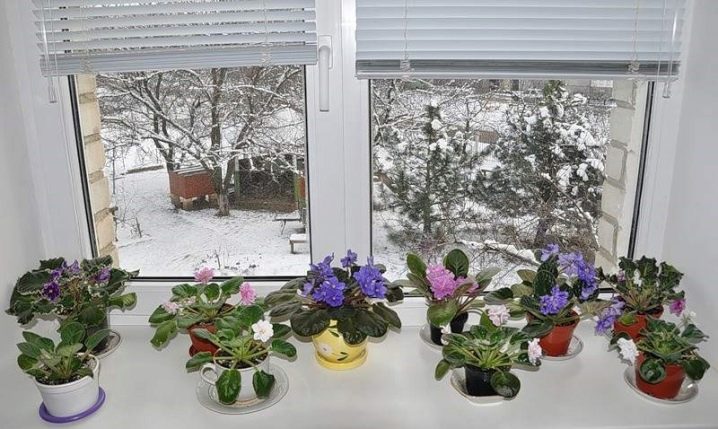
Humidity level
In the winter season, it is especially important to ensure the required level of humidity for Saintpaulia in the house, since the dry air of the batteries greatly disrupts the usual regime. The optimal indicator is in the range from 60 to 70%. Additionally, it makes sense to take care of the following: place containers with ordinary water next to the pots, or purchase a special air humidifier. Placing flowers on a pallet filled with constantly moistened expanded clay will also help. Moreover, violets do not tolerate transportation and further adaptation to new conditions poorly, so it is better to try to improve the existing environment.
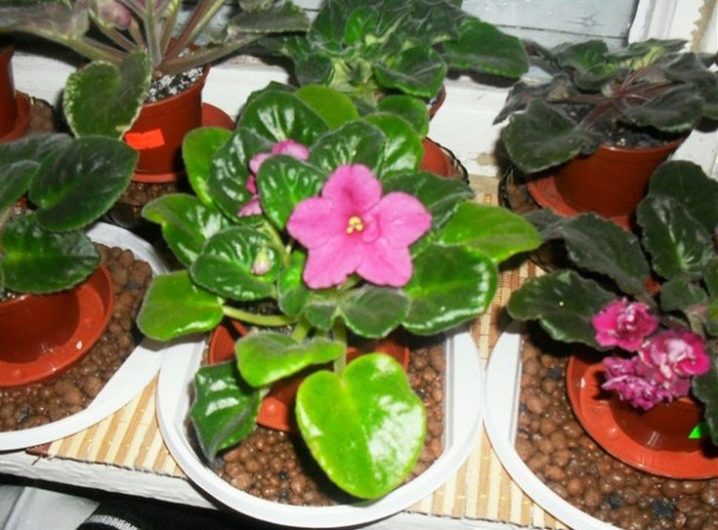
Light mode
Saintpaulias do not respond well to direct exposure to sunlight, which contributes to the appearance of burns on delicate leaves. Therefore, it is best to create diffused lighting for the flowers or even keep them in the shade. However, in order to preserve the violets in winter, they must be additionally illuminated to ensure the required length of daylight hours.
The plant should be exposed to light during the cloudy cold months for at least ten hours. In summer, by the way, this interval increases to twelve hours.
From the end of November to approximately February, the daylight hours are very small, so additional lighting will be required.On the windowsill above the flowers, it is worth placing artificial lamps that are activated in the early morning and late evening. In general, it is necessary to generate 10 to 11 hours of exposure to the light. Both ordinary fluorescent bulbs and specialized phytolamps are suitable. If the light falls on the flower not from above, but from a certain side, then at least once a week the flowerpot should be turned for the even development of all its parts. At any time of the year, it is better for the flower to be on the windowsills of windows looking to the west or east.
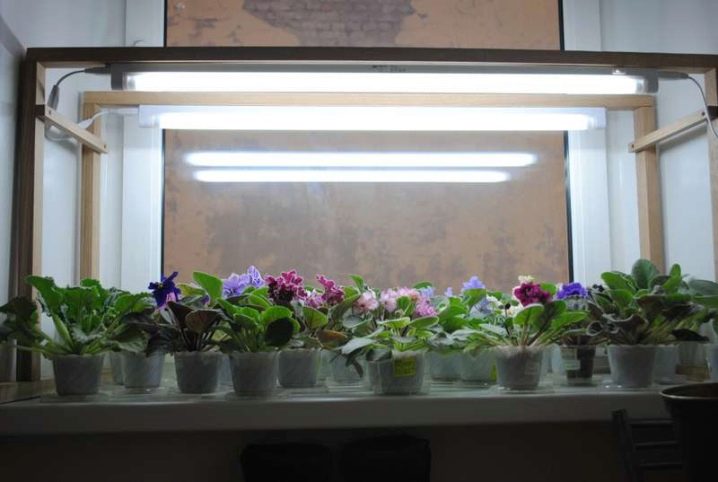
Transfer
In winter, it is not recommended to transplant a room violet at home. Low temperature negatively affects the condition of the plant and its further development. Moreover, a flower in a dormant state will receive additional stress that can deprive it of some of the necessary strength. As a result, the saintpaulia will either be greatly weakened or become more susceptible to disease and will not be able to successfully resist pest attacks.
An exception is made only in cases of danger for the development and very existence of the plant, for example, with illness or with excessive watering, which led to decay of the roots. Planting flowers, by the way, is strictly prohibited in a room with a low temperature. It is recommended to add fragments of foam plastic instead of expanded clay to the pot used for transplanting - this material will additionally protect the plant from cold weather. In the new place, Saintpaulia is lightly watered with warm water and must be covered with polyethylene to protect it from drafts. It is better to move young bushes to new containers, partially replacing the substrate, and transplant already mature violets into new pots with a completely new substrate. During the procedure, a thorough examination of the root system and removal of rotten roots is carried out.
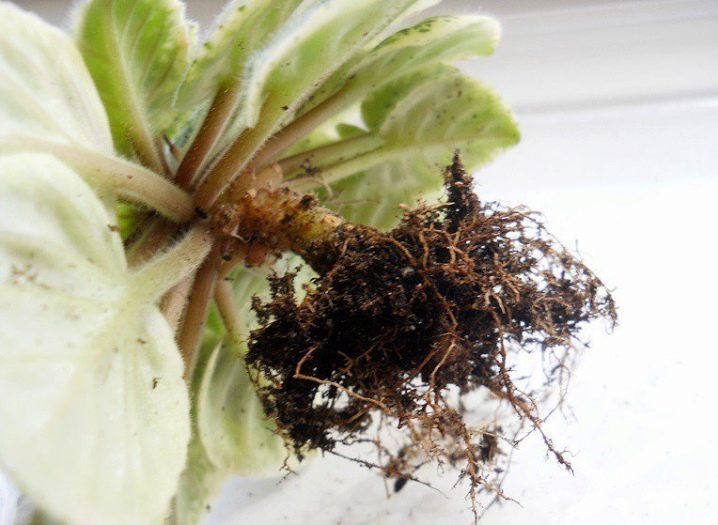
General recommendations
In winter, Saintpaulia begins a dormant period, so the conditions of its maintenance change. Processes are much slower, less resources are required and, as a result, leaving becomes easier. For example, frequent irrigation of violets during the colder months is even harmful. Since the stems of the plant collect much less moisture, the remains stagnate in the soil and lead to putrefactive processes. Therefore, for example, in December, the plant will only need one watering in seven days with a warm, settled liquid.
Some gardeners give up watering altogether and switch to spraying once a week.

If possible, you should use a warm and settled liquid, or additionally wrap containers with a wet cloth. In general, ordinary tap water does not have a very good effect on the violet, due to its specific composition, therefore, at least once a month, the flower should be irrigated with boiled water, to which several crystals of citric acid are added - there are about five pieces per liter of liquid. Alternatively, dilute a teaspoon of vinegar in the same liter. The liquid is poured in a thin stream along the edge of the flowerpot. It is important to ensure that the drops do not fall on either the leaves or the growth point. Of course, both the bottom and wick methods are suitable.

Excessive feeding can also cause some harm. Moderate, however, will not harm - useful substances should be applied every four weeks, and the dosage and frequency of application should be reduced around October. In any case, the condition of the plant should be additionally monitored. If saintpaulia feels unwell, then most likely the visual symptoms will not keep you waiting - the leaves, flowers or trunk will change in some way. By the way, faded leaves should be removed immediately. If this is not done, then the plant will begin to waste energy and resources on something that cannot be restored.
In the event that the Saintpaulia still remains on the windowsill, and there is no opportunity to move it to another place, then the glass should be additionally insulated with foam or thermal insulation material, which is placed between the window and the pot and the flower. Once or twice a month, violet leaves should be wiped with a soft cloth dipped in warm soapy water. Such treatment is able to protect the violet from attacks of ticks and other insects prone to appear somewhere in February - early March. During this period, the immunity of the flower is at zero, and it will not be able to cope with pests on its own.

To get a plant to bloom in winter, it will have to provide a number of conditions. In addition to the optimal temperature, it is necessary to create a day length of at least twelve to thirteen hours, and also make sure that the lighting is diffused. Of course, the absence of drafts is also important. The violet should be irrigated regularly so that the earthen lump is always kept moist, but not wet, and also do not forget about maintaining the required humidity level.
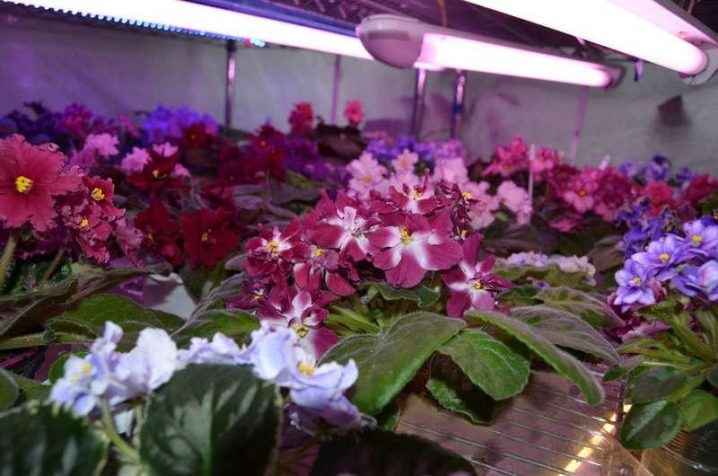
The violet blooms only if it is additionally protected from the effects of pests: thrips, certain varieties of mites and mealybugs. The easiest way to do this is by treating the flower with a weak solution of potassium permanganate.
It is a good idea to place a container with wet expanded clay next to the containers.
The material will be able to calmly and gradually increase the humidity in the room, and this has a beneficial effect on the development of Saintpaulia. If the violet has faded just before the beginning of the winter season, then it is better to quickly transplant it and give the opportunity to rebuild to stay at rest.
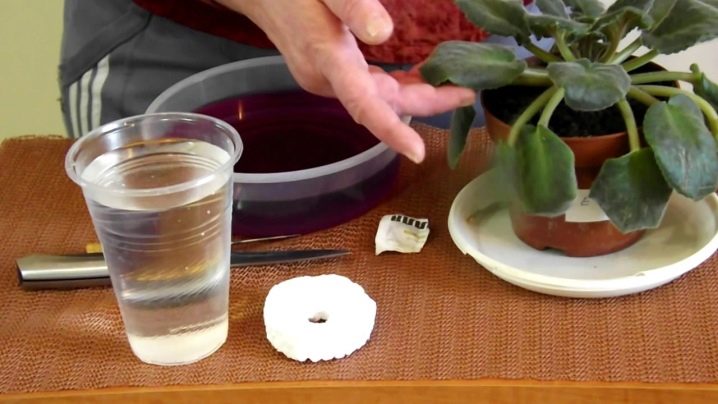
Breeding Saintpaulias in winter is considered a bad decision, as it always comes with additional stress. However, subject to all the rules of growing and care, you can try to grow a new sprout quite successfully. Reproduction is carried out using cuttings, seeds or rooting of leaves in the soil. Using cuttings is suitable for beginner gardeners, as this method is considered the easiest. The green and strong leaf is cut from the mother plant and placed in the water. Further, the sprout should be moved to a well-heated room, eliminating drafts and ensuring regular topping up of liquid. As soon as the first roots sprout at the tip of the leaf, it can be moved into the soil.
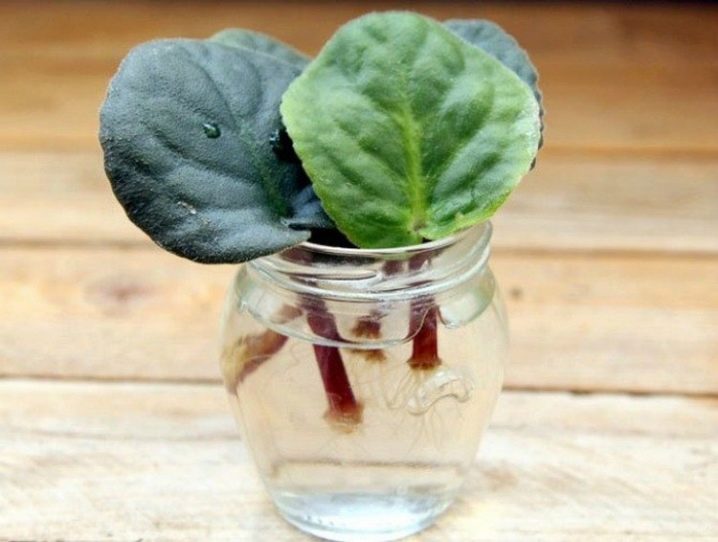
It is not more difficult to root the leaves in the soil. The method is similar to the previous one, only rooting occurs immediately in properly prepared soil. Irrigate such a plant correctly by spraying.
Seed propagation is quite time consuming, therefore this method is used only by qualified professionals who are breeding new varieties.
The most common winter diseases of violets are called late blight and powdery mildew. Late blight is the result of excessive moisture in the soil, as a result of which the leaves begin to turn yellow and wither. In such a situation, the first step is to eliminate the diseased parts of the violet, and then adjust the irrigation system and disinfect the pot. Powdery mildew occurs in conditions of cold and lack of ventilation. In this case, no special measures are required - it is enough to transplant the flower into a pot with new soil and again adjust the existing conditions.
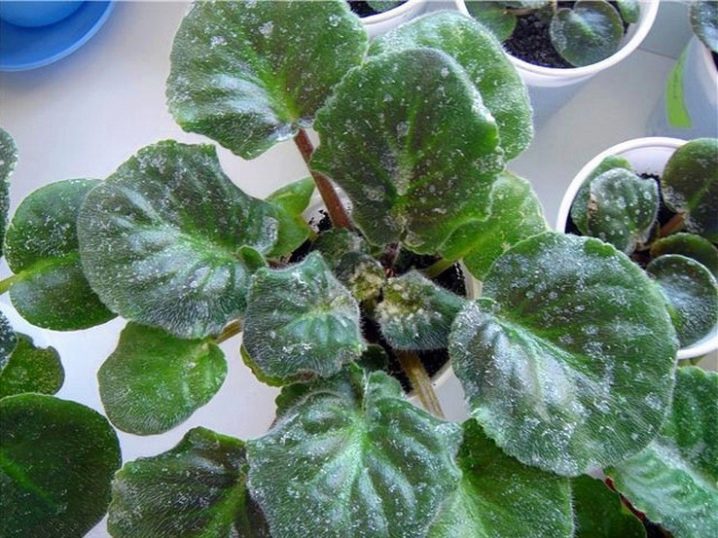
For information on how to care for a room violet in winter, see the next video.































The comment was sent successfully.